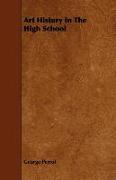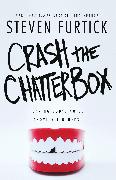Art History in the High School
BücherAngebote / Angebote:
Art History in the High School An article in the Revenue des Deux Mondes ol 3uIy 15, 1899, on this subject is worthy of attention. It is by M. George Perrot, founder of the chair of Classical Archaeology in the French Academy and, with his collaborator Chas. Chi piez, author of the well-known volumes or Ancient Art. In 1891 M. Perrot submitted to the school authorities of France a scheme, EorthwitI adopted and put into operation, by which as compensation for the withdrawal of Greek and Latin from a section of the curriculum, three hours weekly were to be divided between the history of civilization and the history of art, This applied only to the division called the First Modern and not too students preparing for a University course. The experiment has covered eight years and in spite of many draw-backs, has been of such value that M. Perrot insists, in justice to students of the so-called Classical Course, that it be extended to them that these lads destined for liberal careers and with years of training before them, should not be condemned, to a manifest inferiority and alone in their generation be strangers to a whole order of sentiments and ideas now becoming familiar to their more favored comrades. For the first time in its history the Lycke now teaches its pupils that the art of a people, in the same sense as its literature, is the vehicle of its profoundest feeling and highest thought, and their attention is being dirceted to masterpieces of sculpture, painting, and building. The hour seems to have arrived when arguments should be presented in favor of making Art History as much a required study in the classical course as since 1891 it has been in the general course of Modern Instruction though the extension should be made only under condition that illustrative material shall supplement instruction from the chair, The importance of including art histoy in any scheme of education is strongly urged. The language of form interprets intellectual conceptiona and sentiments of the heart with a clearnesr and force equal to any expression by written or spoken word. The literature and history 0f foreer generations give us oily a partial knowledge of any state of society which may be oui study. There are soul traits, soul conditions ani characteristics unrecorded by poet or historian though perhaps hinted at, which will foreve elude the grasp of those who depend only upor written evidence. These conditions of soul, how ever elementary and remote, leave their surt mark on the habitudes and beliefs of a people and though unexplained by the contemporary civilization are often made clear by the work of the artist and builder. One out of many examples is furnished b Schliemanns discoveries, which have unearthet Troy, Mycenae, and Tiryns have recovered from oblivion a primitive Greece of which the Greek themselves had preserved only a slight recollec tion, and have given to the Homeric epoch a back- ground of several centuries. Now this Greece, contemporary with the times of Tothmes and Rameses and anterior to Grecian history and even legend, did not know the art of writing but she did kllow how to quarry and dress stone, how to square wood and make it into frame- work, how to model and bake clay, to melt and hammer lead, bronze, gold and silver, how to carve ivory. Every small scrap fashioned by the tools of these artisans has the value of an authentic document. After what fashion society , was then constructed, what sort of Lives men led, how they understood the tomorrow of death, all t...
Folgt in ca. 15 Arbeitstagen




